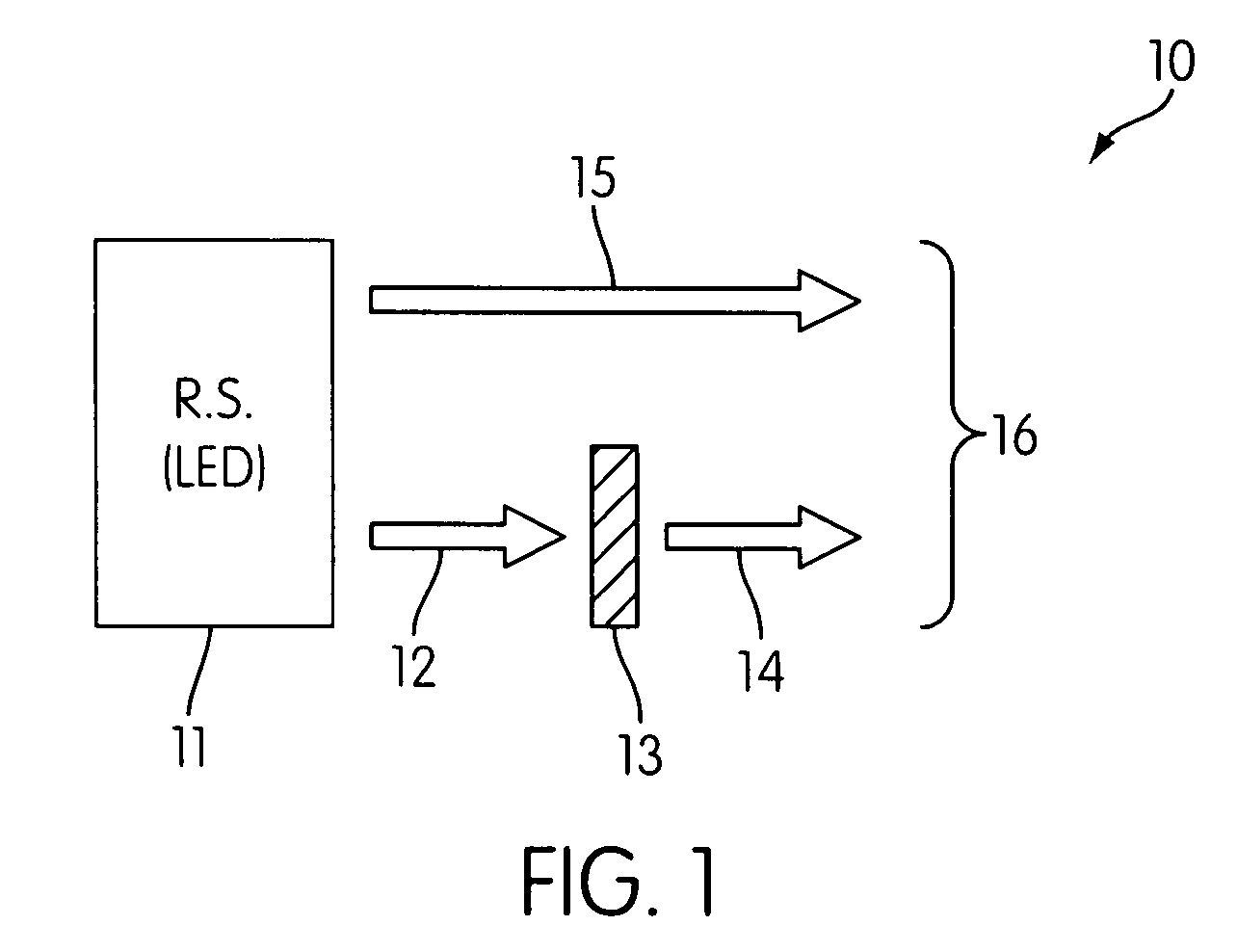Aluminum-silicate based orange-red phosphors with mixed divalent and trivalent cations
- Summary
- Abstract
- Description
- Claims
- Application Information
AI Technical Summary
Problems solved by technology
Method used
Image
Examples
Embodiment Construction
[0017]The novel aluminum-silicate phosphors of the present embodiments are based on divalent, alkaline earth metals M according to the generalized formula M3SiO5, and they emit in the orange-red region of the electromagnetic spectrum. The charge imbalance created by substituting aluminum for silicon in the silicate crystal structure is compensated for by substituting trivalent metals for divalent metals in the silicate structure. The present aluminum-silicate orange-red phosphors have applications providing the long wavelength component of a white light illumination system, and may also be used wherever orange-red illumination systems are needed.
[0018]The excitation source of a white or orange-red illumination system may comprise either a UV, blue or green light source because of the longer wavelengths (lower energies) of the orange-red color relative to UV, blue, or green. Various embodiments of the present orange-red phosphors will be described in the following order: first, a gen...
PUM
 Login to View More
Login to View More Abstract
Description
Claims
Application Information
 Login to View More
Login to View More - R&D
- Intellectual Property
- Life Sciences
- Materials
- Tech Scout
- Unparalleled Data Quality
- Higher Quality Content
- 60% Fewer Hallucinations
Browse by: Latest US Patents, China's latest patents, Technical Efficacy Thesaurus, Application Domain, Technology Topic, Popular Technical Reports.
© 2025 PatSnap. All rights reserved.Legal|Privacy policy|Modern Slavery Act Transparency Statement|Sitemap|About US| Contact US: help@patsnap.com



